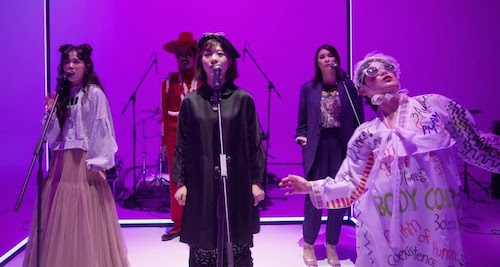
Last month my girlfriend and I visited Mokpo, a somewhat down-at-the-heels port town on Korea’s southwest coast, hoping to have a look at its Japanese colonial architecture and a taste of its tangtangi, a local specialty involving raw beef and still-twitching squid. Though Mokpo lacks Seoul’s density of screens, it has just enough of them to make us notice the same music video playing all over the city — and that its hot pink-suited dancers were cavorting through the very places we’d put on our itinerary. The production was, of course, part of a campaign to promote Korean tourism; more surprisingly, it had racked up well over 30 million views on YouTube since that campaign launched last summer. Driving the phenomenon was less the video itself, however picturesque and amusing its imagery, than the music, the work of an overnight sensation called Leenalchi (이날치).
Like all overnight sensations, Leenalchi’s roots run deeper than they appear to; this holds true even in the notoriously capricious popular culture of 21st-century Korea. Some run all the way to 17th-century Korea, where the traditional form of musical storytelling known as pansori has its origins. Though an unlikely source of inspiration for dance music popularized through YouTube, pansori has enjoyed its moments of modern-day popularity, the most notable having occurred after Im Kwon-taek’s Seopyeonje (서편제) in 1993. That film takes its title from a regional form of pansori; Leenalchi, in turn, take their name from 19th-century pansori master credited with developing it, Lee Nal-chi. Most of the band’s members have studied under pansori masters themselves, but their music has none of the rigorous purism of government-funded gugak, or “national music”: they’re pop artists first, creators of songs to be enjoyed in the moment.
This, at any rate, is the line taken by Jang Young-gyu, one of Leenalchi’s masterminds. Long established as a film composer, Jang’s body of work includes the score for Na Hong-jin’s The Wailing (곡성), which in 2016 unsettled audiences the world over by repurposing Korean shamanism into the material for modern-day horror. He also played bass in Ssingssing, a cross-dressing “gugak fuion” rock band whose style also partook from shamanistic tradition. This seemingly niche act turned out to have global appeal: it was after Ssingssing receiving a hugely positive response to a 2017 show for NPR’s Tiny Desk Concert series, of all venues, that Jang came to understand the potential they’d tapped. The next year he and Ssingssing drummer Lee Cheol-hee played in Dragon King, a pansori-based musical production that put them alongside the skilled vocalists who would become their bandmates in Leenalchi.
Read the whole thing at the Los Angeles Review of Books.